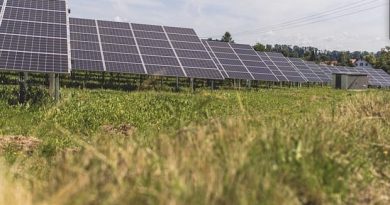International Action To Scale Up Hydrogen For Clean Energy Future: IEA
The world has an important opportunity to tap into hydrogen’s vast potential to become a critical part of a more sustainable and secure energy future, the International Energy Agency (IEA) has revealed in a major new report.

The in-depth study, which analyses hydrogen’s current state of play and offers guidance on its future development, is being launched on the occasion of the meeting of G20 energy and environment ministers in Karuizawa, Japan. The report, ‘The Future of Hydrogen: Seizing Today’s Opportunities’ finds that clean hydrogen is currently receiving strong support from governments and businesses around the world, with the number of policies and projects expanding rapidly.
Hydrogen can help to tackle various critical energy challenges, including helping to store the variable output from renewables like solar PV and wind to better match demand. It offers ways to decarbonise a range of sectors – including long-haul transport, chemicals, and iron and steel – where it is proving difficult to meaningfully reduce emissions. It can also help to improve air quality and strengthen energy security.
“Hydrogen is today enjoying unprecedented momentum, driven by governments that both import and export energy, as well as the renewables industry, electricity and gas utilities, automakers, oil and gas companies, major technology firms and big cities,” Faith Birol, IEA’s Executive Director said. “The world should not miss this unique chance to make hydrogen an important part of our clean and secure energy future.”
To build on this momentum, the report offers seven key recommendations to help governments, companies and other stakeholders to scale up hydrogen projects around the world. These include four areas where actions today can help to lay the foundations for the growth of a global clean hydrogen industry in the years ahead:
- Making industrial ports the nerve centres for scaling up the use of clean hydrogen;
- Building on existing infrastructure, such as natural gas pipelines;
- Expanding the use of hydrogen in transport by using it to power cars, trucks and buses that run on key routes;
- Launching the hydrogen trade’s first international shipping routes.
The report notes that hydrogen still faces significant challenges. Producing hydrogen from low-carbon energy is costly at the moment, the development of hydrogen infrastructure is slow and holding back widespread adoption, and some regulations currently limit the development of a clean hydrogen industry.
[related_post]
Presently, hydrogen is already being used on an industrial scale, but it is almost entirely supplied from natural gas and coal. Its production, mainly for the chemicals and refining industries, is responsible for 830 million tonnes of CO2 emissions per year. That’s the equivalent of the annual carbon emissions of the United Kingdom and Indonesia combined.
Reducing emissions from existing hydrogen production is a challenge but also represents an opportunity to increase the scale of clean hydrogen worldwide. One approach is to capture and store or utilise the CO2 from hydrogen production from fossil fuels. There are currently several industrial facilities around the world that use this process, and more are in the pipeline, but a much greater number is required to make a significant impact.
Another approach is for industries to secure greater supplies of hydrogen from clean electricity. Expanding the use of clean hydrogen in other sectors – such as cars, trucks, steel and heating buildings – is another important challenge. There are currently around 11,200 hydrogen-powered cars on the road worldwide. Existing government targets call for that number to increase dramatically to 2.5 million by 2030.
The report focuses on how the policy makers need to make sure market conditions are well adapted for reaching such ambitious goals. The recent successes of solar PV, wind, batteries and electric vehicles have shown that policy and technology innovation have the power to build global clean energy industries.




